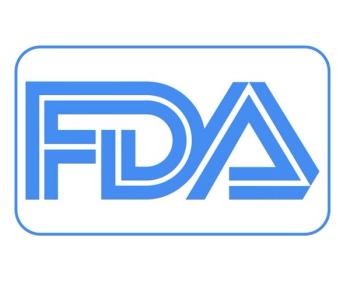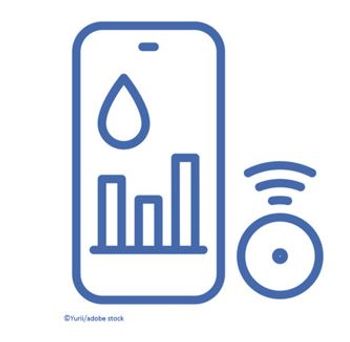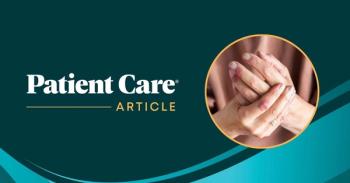
US Obesity Rates Decline in Tandem With Rise in Use of GLP-1 RA, New Gallup Index Shows
Use of GLP-1 receptor agonists for weight loss has more than doubled since early 2024 while 7.6 million fewer US adults qualify as obese in 2025.
US obesity rates have shown a statistically significant decline for the first time in years, coinciding with a sharp rise in the use of GLP-1 receptor agonist drugs, according to new findings from Gallup’s National Health and Well-Being Index released this month.
After peaking at 39.9% in 2022, the adult obesity rate has dropped to 37.0%, a reduction representing approximately 7.6 million fewer adults classified as obese in just 3 years. This decrease follows the doubling in use of GLP-1 medications, such as semaglutide (brands Ozempic and Wegovy), prescribed specifically for weight loss since early 2024. The poll was based on surveys of 16,946 US adults during the first 3 quarters of 2025.
Key Findings
- Since February 2024, the proportion of adults using GLP-1 injections for weight loss increased from 5.8% to 12.4%. Use remains higher in women (15.2%) than men (9.7%), but rates have more than doubled in both groups over the past year.
- Obesity rates dropped more in women (down 3.5 percentage points to 38.8%) than in men (down 2.3 points to 35.2%) since 2022, paralleling greater uptake of GLP-1 therapy among women.
- The most notable declines in obesity occurred among adults:
- Ages 40–49: down 4.3 points to 43.3%; 16.2% now use GLP-1 drugs for weight loss
- Ages 50–64: down 5.0 points to 42.8%; 17.0% report using these medications
- Minimal change was seen in the youngest adults and seniors, despite the latter population having the third-highest usage rate (11.1%) but reporting less weight loss benefit.
The data reveal a clear correlation, report authors noted: age groups with the highest GLP-1 usage rates show the greatest reductions in obesity. However, seniors present an anomaly. While their usage rate is the highest, at 11.1%, there is no observed corresponding reduction in obesity. "Previous Gallup research indicates that older Americans report significantly lower effectiveness from these medications compared with younger age groups," according to the report.
Another paradox of the findings, the percentage of Americans diagnosed with diabetes has reached 13.8%, the highest yet recorded in the Gallup surveys. Reductions in obesity have not yet yielded measurable declines in diabetes diagnoses, the researchers note, pointing out the reflection of diabetes as a lifetime disease. "Once diagnosed, patients remain in that category regardless of subsequent weight changes." Obesity continues to correlate with increased diabetes prevalence across all age groups, but is not the sole factor, authors added.
Access and Attitudes
The survey also probed respondents' attitudes on the approval of GLP-1 drugs for weight loss and found signficant shifts in public opinion:
- Awareness of weight loss injectables soared to 89% nationally in 2025, up from 80% the previous year.
- More than half (53%) of Americans see these drugs as helpful for those with obesity or weight-related conditions, although 62% oppose the use of semaglutide for people without such conditions.
- GLP-1 medications are now covered by 13 states under Medicaid, with ongoing legislative efforts for broader coverage.
The sustainability of the obesity decline may depend on both improved access to pharmacotherapy and parallel progress in public health behaviors, authors suggested. Former users of GLP-1s report somewhat fewer obesity-related chronic conditions than current users, suggesting modest long-term benefit but not a replacement for healthier daily routines.
Limitations, Considerations
While GLP-1 uptake aligns with reduced obesity rates, the impact on new diabetes incidence remains unproven. The article cautions, "While GLP-1s support weight management, they should not be considered a cure-all for overall health or other disease states." Non-pharmacologic factors such as physical activity and healthy eating habits remain crucial for sustained health gains, and recent Gallup findings indicate that U.S. adults' overall health habits have declined compared to 2019. Genetic risk and sociodemographic differences continue to shape U.S. diabetes and obesity landscapes, as well. Considerations
Gallup’s data draws from more than 16,900 adults surveyed in 2025. Obesity rates use self-reported height and weight, a method that may slightly underestimate true obesity rates due to social desirability, but nevertheless reflects consistent trend data. Since the initiation of ongoing Gallup measurement in 2008, US obesity rose by more than 14% through the era of COVID-19 before this recent downturn.
With nearly 9 in 10 Americans now aware of GLP-1 medications, 2025 may mark a transitional period both for clinical obesity management and national health strategy. Whether these advances translate into lasting improvement will depend on continued access, surveillance, and broader changes in public health behaviors, the authors concluded.
Source: Witters D, James MP. Obesity rate declining in the US. Wellbeing. Gallup. October 2028, 2025. Accessed October 31, 2025. https://news.gallup.com/poll/696599/obesity-rate-declining.aspx
Newsletter
Enhance your clinical practice with the Patient Care newsletter, offering the latest evidence-based guidelines, diagnostic insights, and treatment strategies for primary care physicians.



















































































































































































































































































